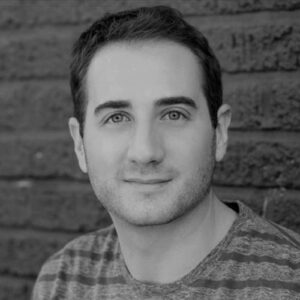
Like so many of you, last fall I embarked on teaching and directing online with trepidation. I thought my goal was to make the classroom and the event of the play feel as if it were all happening in person. To be honest, I tried to prepare for anything that could go wrong with virtual-ness of it. But after working through the initial discomfort, I learned that directing and teaching acting online, wasn’t all that different from the process of making theatre in a new space altogether. I knew this road. I was trained on how to make a rehearsal space or classroom conducive to experience of exploring a play. Moreover, I had simply fallen into my usual process of listening and reacting to how the distinctiveness of the space could be used to further illuminate the story. This time, it just happened to be a totally virtual space.
As directors, we work through the many possibilities with our team as we sketch ideas for the space that will contain the story. The major takeaway from directing on Zoom was a reminder to always be open to investigating the honesty of the space to help the container feel like a natural fit for the world of the play. Furthermore, that kind of diligent search for intuiting honesty should be a guiding principle in all our work. No matter how much we design a non-traditional space, it’s always going to be a non-traditional space. So let’s use it as such and before we just take what we are given, part of our process should be evaluating the space and mining it for all its possibilities in helping us elevate the story’s theatricality.
Indeed, that kind of process of adaptability is a core value for many directors. I remember when I was a touring actor/technician for the National Theatre of Arts and Education. For our touring productions, eight of us would roll up to a venue, set up platform walls, hang lights, prepare a sound system, and systematically plan to manage a show all in about an hour from our arrival at the venue. Every day on a tour like that was a test in the adaptability process. We could be doing the show in any kind of space ranging from a 50-seat school cafeteria to a 10,000-seat professional Union theater.
The big part of succeeding at a venue, making it feel right, was owning the truth of the material we were working with. There are always limits to the space, but there are also always possibilities. So, with Zoom, I found that I could not make it feel like a theatre. It honestly does not do that. Instead, I wanted to embrace what it could do. It could provide a close-up intimacy to the actor. It could add a sense of isolation for the character wishing to connect to his love interest, and so the platform created a useful conflict for him. It allowed us to utilize different camera angles for shifts in perspectives at specific moments. We got to upload digital media content to further the plot between each act that wasn’t just sitting in a theatre lobby or projected on a scrim. We set the action of the play on Zoom because we could. All of which elevated of the story and production.
I think the answer lies within looking at our initial approach to a space and being sure with our designers that we are preparing ideas that expand what it can do. Even if it’s a space we’ve worked in many times, I think there’s always more ways to unlock what’s possible because each play relates to space differently. We will be so lucky to walk into theaters again soon and create new things. How wonderful will it be look at some of these spaces with fresh eyes and dream of all the new ways we can use them?
The Spark Parade: Art is a Mirror


Steve is a freelance theatre director, actor, and educator. Currently, he is a Visiting Assistant Professor of Theatre at SUNY Oswego. He has taught theatre professionally at the West Side YMCA in New York City and in residence at Long Island University, in addition to private coaching and classes. Steve is a proud member of Actors' Equity and an Associate Member of SDC.
Read Full Profile© 2021 TheatreArtLife. All rights reserved.

Thank you so much for reading, but you have now reached your free article limit for this month.
Our contributors are currently writing more articles for you to enjoy.
To keep reading, all you have to do is become a subscriber and then you can read unlimited articles anytime.
Your investment will help us continue to ignite connections across the globe in live entertainment and build this community for industry professionals.